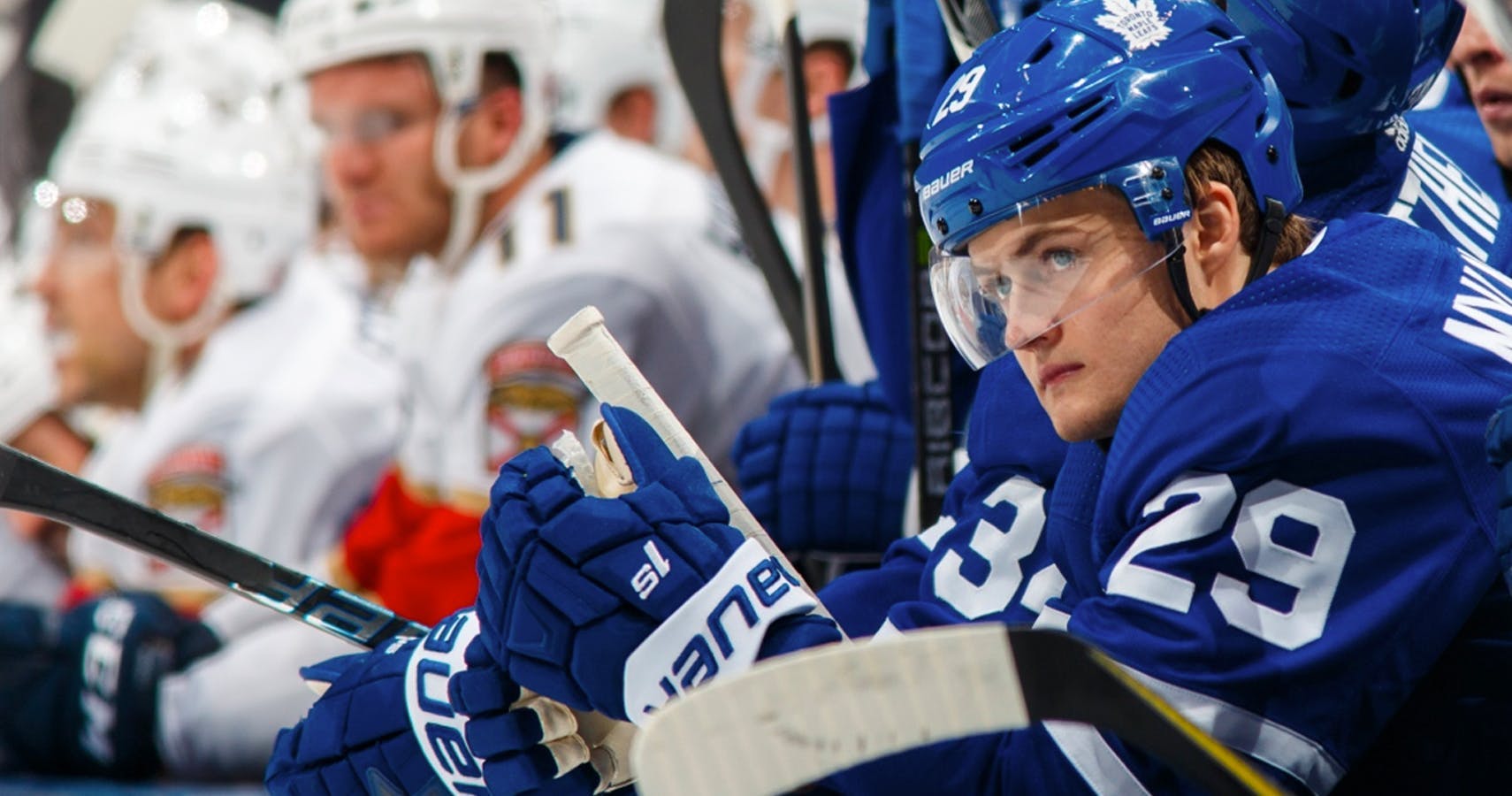This week’s article will take a look at the impact of Nylander’s arrival, the Josh Leivo trade, and the Toronto Maple Leafs’ cap-situation moving forward.
It was quite a busy week, so let’s get right into it.
The Return of William Nylander
Thank God William Nylander is playing this season. As Anthony Petrielli said in his weekly notebook, we’ll finally get to see the full lineup that everyone dreamed about all summer. His $6.96 million cap hit in years two-to-six is perfectly reasonable, and there’s plenty of cap space to go around for this season.
The Matthews-Nylander duo has a track record of dominating and Toronto’s lineup instantly becomes deeper as a result. The Tavares line is posting strong numbers from both a scoring and expected-goal perspective, and with all due respect to Kasperi Kapanen, Matthews will be playing with a first-line calibre winger for the first time this year. While Matthews is bound to make the most of his chances regardless of who he plays with, Nylander’s presence should provide the Leafs with two first lines.
The Tavares line has been playing against some tough matchups to start the year, and Nylander’s return could help to soften his usage, at least a little bit. Tavares is not used to playing on such a deep roster — he’s been the main focus of the opposition for years — and I’m sure that he won’t be regretting his decision to sign in Toronto anytime soon. The Leafs often ran a line of James van Riemsdyk, Tyler Bozak, and Mitch Marner against weaker competition in previous seasons, and while that line had plenty of success, they weren’t centered by a dominant pivot like Matthews or Tavares.
Nylander should bring stability to the second power play unit, which has lacked a high-end quarterback. His presence pushes Kapanen and Brown down the depth chart, where Kadri should be able to create more scoring chances as a result. He’s a zone-entry king and underrated takeaway specialist, and I expect his shooting percentage to improve from last year. The Leafs were already a good team, but adding another 70-point-calibre scorer distinguishes them from the field.
It’s Time for Nazem Kadri’s Line to Step Up
Nazem Kadri has just six points in 381 five-on-five minutes this year, while Patrick Marleau and Connor Brown are off to an even worse start from a points-per-minute perspective. Toronto’s lack of scoring depth has been largely overshadowed by the incredible success of Tavares, Marner, and Matthews. Nylander’s addition should now move Kapanen to the third line, which should provide the Leafs with something they haven’t had yet this year: three strong scoring lines.
Five-on-Five Points Per Sixty Minutes: Toronto’s Centers
| 2016-17 | 2017-18 | 2018-19 | |
|---|---|---|---|
| Auston Matthews | 2.12 | 2.93 | 3.5 |
| John Tavares | 1.84 | 2.03 | 3.12 |
| Nazem Kadri | 2.05 | 1.8 | 0.94 |
Auston Matthews is shooting 30% this year, and even if he’s the best shooter in the league, that’s bound to drop 10%. Marner probably isn’t going to score at a 114-point pace forever, so Kadri’s line is going to need to step up eventually. Kapanen should give him a chance. In addition, I am a huge fan of Kapanen in a matchup role; he could potentially reunite with Andreas Johnsson to form an effective shutdown line.
Josh Leivo Heads to Vancouver
The now-departed Josh Leivo played just 29 games in two years and the Leafs owed him a fresh start if he was about to sit again. He’s a capable fourth line player by all regards, but Tyler Ennis is also perfectly capable in this role and Trevor Moore is ready to step in if needed. I wish him all the best in Vancouver.
Mike Babcock just didn’t seem to value Leivo. Playing Matt Martin and Leo Komarov over him was questionable, and while I don’t view Leivo as a high-end forward, he protected the puck well and generated plenty of takeaways this year. However, he did not bring a strong transition game to the table and he also did not click with Kadri when he moved up in the lineup.
It’s tough to lose too much sleep over a fourth line player, even if he’s a capable one. If Babcock was going to play Ennis over Leivo, there’s not much Dubas could have done. Michael Carcone is still only 22 and I’ll take a player with 17 points in 20 AHL games over a conditional draft pick.
Cap Situation Going Forward
As you may have heard, the Leafs will be in a bit of a cap crunch next season. Patrick Marleau will be in the final year of his three-year deal and both Matthews and Marner are going to be paid by then. As a result, it’s important to save money at the bottom of the roster.
I’m perfectly fine with having Trevor Moore and Mason Marchment on the fourth line of the Leafs next year. This duo has been outstanding for the Marlies, as they protect the puck well in the offensive zone while generating plenty of takeaways. Moore is unlikely to have much of an NHL track record heading into the offseason, so he could sign a one-way deal for $700k, similar to Justin Holl.
My guess is that Matthews’ cap hit starts with an 11 rather than a 12. Although I’m the president of the Mitch Marner fan club, 22-year old RFA wingers simply do not make $10 million per season. He has next to no chance of topping Nikita Kucherov’s $9.5 million dollar cap hit that starts next season, as Tampa was mainly paying for UFA years. If you don’t agree with me, ask yourself: Are you looking at the cap hit of comparable wingers who were as young as Marner when they signed?
Frederik Gauthier and Justin Holl are both under contract for $675k next year and both players could stick around as a result. Igor Ozhiganov and Par Lindholm could both be replaced if they require a significant raise and there’s a chance that the Leafs try to save $1.5M or so in cap space by moving Connor Brown.
Jake Gardiner is on pace for “just” 38 points this year compared to the 52 he scored last year. Mike Babcock clearly loves him and Kyle Dubas probably prefers him to Nikita Zaitsev. The Leafs will have to add a high-end defenseman somehow, and Gardiner would only cost money rather than picks and prospects. Don’t be totally surprised if Gardiner re-signs, with the Leafs opting to save money by promoting two of Moore, Marchment, Grundstrom, and Engvall.

































